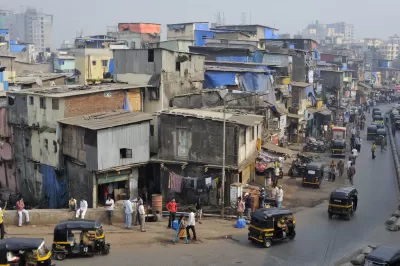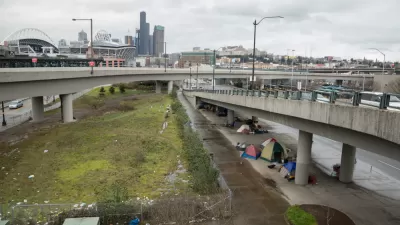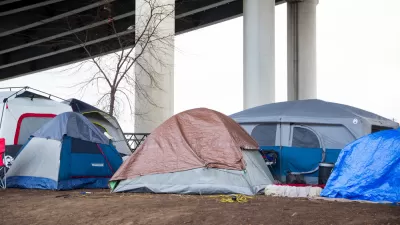In photographs and written observations of a recent trip to Mumbai, India, former SPUR Director Jim Chappell queries how the lives of the poorest people there compare to the lives of low-income Americans.

India has long been emblematic of poverty and inequality. Mother Teresa is known for her work with poor of Kolkata (fka Calcutta). But U.S. poverty and inequality has been on the rise for decades, with the visibility of abject poverty at a nearly unprecedented level. In many U.S. cities, the co-existence of the housed and the homeless is strained, as the number of homeless living in streets and parks diminishes the livability of the cities for even its wealthier citizens. Jim Chappell, a planning consultant and former Executive Director of SPUR, recently traveled to India. As planners and architects can relate, recreational travel for those in the planning professions is never fully recreational. Travel quickly turns into an inquiry of what works differently in the respective destination.
Chappell was struck by the impression that the poorest people of India seemed less disconnected and less socially isolated than their counter-parts in the United States. Additionally, they seemed to have access to work and while housing was substandard, he saw far fewer people sleeping exposed, in the open, in public spaces. While admittedly not an academic or scientific, Chappell provides some food for thought about how we in the United States are failing our poor:
India is a tremendously different culture, an ancient culture with religions and family structures and social structures different from ours. I am not qualified to draw any conclusions from it. But somehow they have managed to provide work that is necessary for society and meaningful enough to the individuals that they do it. And the people have a place to live, very substandard though it may be.
For more detail on Chappell’s observation, as well as photographs, please visit the source article.
FULL STORY: What are we doing wrong?

Study: Maui’s Plan to Convert Vacation Rentals to Long-Term Housing Could Cause Nearly $1 Billion Economic Loss
The plan would reduce visitor accommodation by 25,% resulting in 1,900 jobs lost.

North Texas Transit Leaders Tout Benefits of TOD for Growing Region
At a summit focused on transit-oriented development, policymakers discussed how North Texas’ expanded light rail system can serve as a tool for economic growth.

Why Should We Subsidize Public Transportation?
Many public transit agencies face financial stress due to rising costs, declining fare revenue, and declining subsidies. Transit advocates must provide a strong business case for increasing public transit funding.

How to Make US Trains Faster
Changes to boarding platforms and a switch to electric trains could improve U.S. passenger rail service without the added cost of high-speed rail.

Columbia’s Revitalized ‘Loop’ Is a Hub for Local Entrepreneurs
A focus on small businesses is helping a commercial corridor in Columbia, Missouri thrive.

Invasive Insect Threatens Minnesota’s Ash Forests
The Emerald Ash Borer is a rapidly spreading invasive pest threatening Minnesota’s ash trees, and homeowners are encouraged to plant diverse replacement species, avoid moving ash firewood, and monitor for signs of infestation.
Urban Design for Planners 1: Software Tools
This six-course series explores essential urban design concepts using open source software and equips planners with the tools they need to participate fully in the urban design process.
Planning for Universal Design
Learn the tools for implementing Universal Design in planning regulations.
City of Santa Clarita
Ascent Environmental
Institute for Housing and Urban Development Studies (IHS)
City of Grandview
Harvard GSD Executive Education
Toledo-Lucas County Plan Commissions
Salt Lake City
NYU Wagner Graduate School of Public Service





























